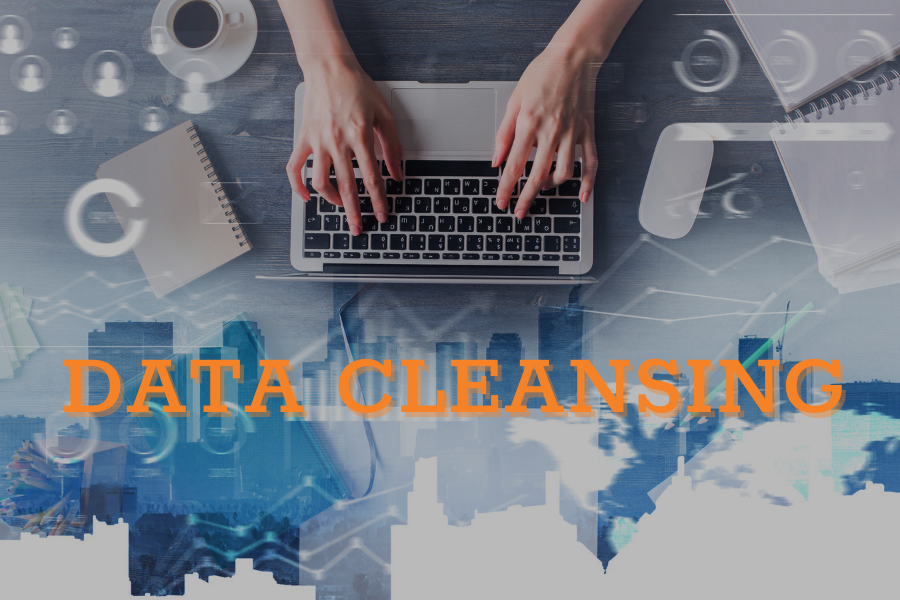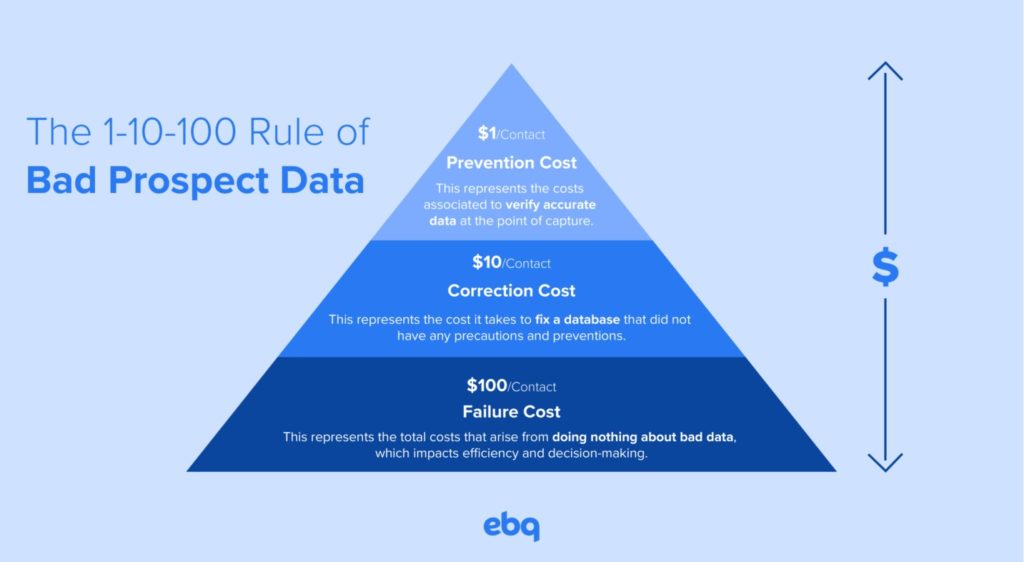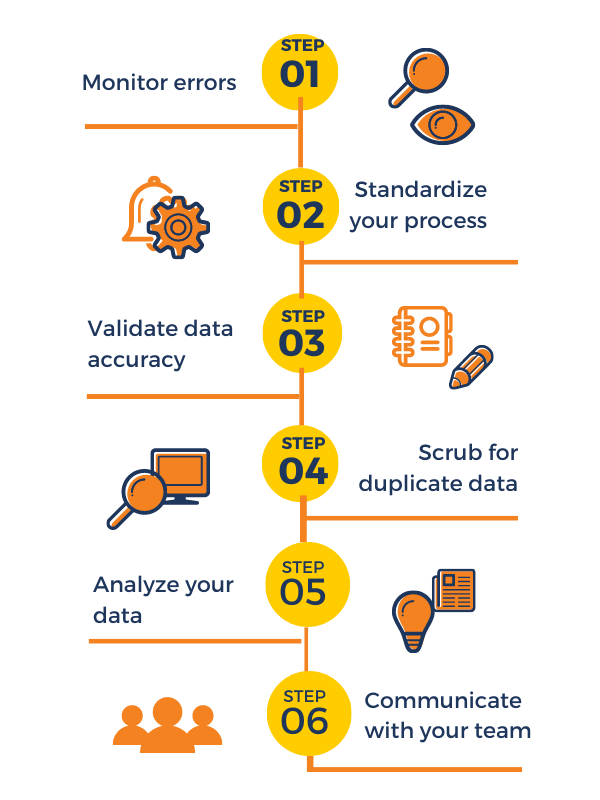Data Cleansing 2024: Why it Important? 6 Steps to Data Cleansing

Because data is the lifeblood of machine learning and artificial intelligence, enterprises must ensure that data is of high quality. While data markets and other data providers can assist enterprises in obtaining clean and organized data, these platforms do not allow firms to assure data quality for their own data. As a result, companies must grasp the processes of a data cleansing strategy and how to use data cleansing technologies to eradicate problems in data sets.
Data cleansing (also known as data cleansing or data scrubbing) is a broad term that refers to the techniques that have been developed to assist organizations in obtaining better data. Any firm that chooses to apply these processes will reap a variety of benefits, but one of the most obvious is better decision making.
The following are some of the most frequently asked questions about data cleaning that we address in this article:
What is Data Cleansing?
Data Cleansing, or Cleansing is the process of ensuring that data is correct, consistent, and usable. Data cleaning entails finding and replacing data and records that are missing, erroneous, irrelevant, or otherwise problematic (‘dirty’). You can clean data by looking for faults or corruptions, repairing or eliminating them, or manually processing data as needed to avoid repeating the same mistakes.
Although software solutions can help with most parts of data cleansing, some tasks must be completed manually. Although data cleaning might be a daunting undertaking, it is an important aspect of managing firm data.
Why are we in need of it?
The importance of data cleansing is to ensure that data integrity is maintained. Data integrity is critical because it is the only method to ensure that the data we use to make decisions is of good quality.
Because our decisions are frequently reliant on data sets, if the data is of low quality, so will our decisions. As a result, data integrity is crucial since it allows us to have high-quality data, which leads to better decisions.
Data is unquestionably one of the most important assets a company can have in order to support and lead its growth. Poor data quality costs the United States 3.1 trillion dollars each year, according to an IBM research. Poor data should be addressed right away, as seen in the graph below. According to the 1-10-100 quality principle, the cost of poor data increases exponentially.

The following are some instances of issues that can develop as a result of erroneous data:
Functions of the business
- Marketing: An ad campaign that targets users with unrelated offerings based on low-quality data. This not only lowers consumer happiness, but it also means you’re missing out on a lucrative sales opportunity.
- Sales: Due to a lack of complete, accurate data, a sales person fails to contact past customers.
- Compliance: Any internet firm that receives government penalties for failing to comply with data privacy regulations for its customers. As a result, the data cleansing vendor should give you with sufficient assurances that your data will be processed in accordance with GDPR guidelines.
- Operations: Configuring robots and other production machinery based on low-quality operational data can pose severe issues for manufacturing businesses.
Industries
- Healthcare: Dirty can contribute to incorrect treatments and failing pharmaceutical medications in the healthcare industry. According to an Accenture poll, 18% of health executives say that a shortage of clean data is the biggest roadblock to AI reaching its full potential in healthcare.
- Accounting & Finance: Inaccurate and inadequate data can result in regulatory violations, manual inspections that delay decisions, and sub-optimal trade strategies.
- Manufacturing and logistics: Accurate data is required for inventory appraisals. If data is missing or incorrect, delivery issues and customer dissatisfaction may result.
Organizations can prevent these circumstances and consequences by using clean data.
See more: Why Data Analytics is Essential to the Customer Experience
What are the benefits of data cleaning?
Data of higher quality has an impact on all activities that use data. Data is used in almost all modern business activities. As a result, when data cleaning is viewed as a critical organizational endeavor, it can result in a slew of benefits for everyone. The following are some of the most significant advantages:
1. It considerably enhances your ability to make decisions.
This is a no-brainer, and we’ve already talked about it in this article. It is one of the most significant advantages of data cleansing.
Data that has been cleansed and is of good quality can aid in the development of analytics and business intelligence. As a result, better decision-making and execution of objectives may be possible. One of the most important advantages of implementing a robust data cleansing procedure is this.
2. It facilitates the acquisition of new customers.
By ensuring that they have high-quality data, businesses can greatly improve their client acquisition efforts.
This can be done with the help of a good data cleansing technique. For example, a business can be significantly more efficient at attracting new consumers and even retargeting previous clients by cleansing and assuring data accuracy. Customer Relationship Management (CRM) software and analytics systems are built on this principle.
3. It conserves precious resources.
Getting rid of duplicate and erroneous data from databases can help a company save money. Both storage space and processing time are included in these resources. Duplicate and erroneous data can quickly deplete an organization’s resources, especially if it is heavily data-driven. Cleaning and scrubbing data after it has been acquired can be time-consuming and costly if you don’t have the right tools and processes in place.
4. It increases output.
Clean data allows employees to make the most of their working hours. Employees may end up spending a large amount of time cleaning data and re-analyzing it owing to errors if you use low-quality data. Furthermore, because the data is of poor quality, employees may make inaccurate conclusions. At best, this can result in major inefficiencies, and at worst, it can result in catastrophic errors.
Furthermore, the capacity to make competent and timely decisions can enhance employee morale, allowing them to be more efficient and confident in their decisions. As a result, overall productivity increases.
5. It has the potential to enhance revenue.
Effective processes are critical in the business world. It can be highly costly to spend a lot of time cleansing data.
Businesses who attempt to improve the quality of their data through a data cleaning plan can see a significant increase in consumer response rates. As a result, there is more productivity, happier consumers, and better decisions. In Part Two of this tutorial, we’ll go over how to put your data strategy into action so you can get the most out of your money.
When these many advantages are combined, the result is usually a more lucrative firm. This is due not only to improved external sales efforts, but also to improved internal efforts and operations.
What are the various forms of data problems?
When businesses aggregate datasets from numerous sources, scrape data from the web, or acquire data from clients or other departments, they face a variety of data difficulties. The following are some examples of data issues:
- Duplicate data: There are two or more records that are identical. This may result in inaccurate inventory counts, duplication of marketing collateral, or billing actions that are unnecessary.
- Conflicting Data: When the same records have different properties, it indicates that the data is in dispute. A corporation with many versions of addresses, for example, may have delivery complications.
- Incomplete Data: The information that is missing some qualities. Employees’ payrolls may not be completed because their social security numbers are absent from the database.
- Invalid Data: The properties of the data do not follow the standardization process. For example, instead of 10 digits, 9 digit phone number records are used.
What are the underlying reasons of data problems?
Data problems develop as a result of technical challenges such as:
- Data synchronization issues: When data isn’t shared properly between two systems, it might cause problems. If a banking sales system captures a new mortgage but fails to update the bank’s marketing system, the customer may be confused if they receive a message from marketing.
- Software flaws in data processing applications include the following: Due to numerous faults, applications can write data with errors or overwrite accurate data.
- Users’ obfuscation of information: It’s the deliberate obfuscation of information. To protect their privacy, people may provide partial or erroneous information.
What is high-quality data?
A few factors can be used to determine whether or not data is of good quality. It’s as follows:
Validity refers to how well the data adheres to the business rules or limitations that have been established. The following are some frequent limitations:
- Restriction that must be followed: It is not possible to leave some columns blank.
- Constrained data types: A column’s values must be of the same data type as the column itself.
- Limitations in terms of range: Numbers or dates with minimum and maximum values
- Constraints on foreign keys A column’s set of values is defined in a column of another table that contains unique values.
- Special limitations: In a dataset, at least one field must be unique.
- Patterns of normal expression: This is how text fields must be validated.
- Validation across fields: Certain requirements involving multiple fields must be met.
- Foreign-key constraints have a subtype called set-membership constraints. A column’s values are derived from a series of discrete values or codes.
- Accuracy is the degree to which data adheres to a standard or a real value.
- Completeness: The extent to which the data and related measures are recognized to be thorough or comprehensive.
- Consistency: Measurement equivalence across systems and subjects
- Uniformity: Ensuring that all systems utilize the same units of measurement.
- Traceability: The ability to locate (and access) the data’s source.
- Timeliness: How recently the data was changed and how quickly it was updated.
These several traits when combined can enable an organization have high-quality data that can be used for a variety of purposes with no requirement for educated hypothesizing.
6 steps to data cleansing
1. Monitor errors
Keep track of the patterns that lead to the majority of your errors.
This will make detecting and correcting inaccurate or faulty data much easier. If you’re integrating other solutions with your fleet management software, keeping records is extremely vital so that your mistakes don’t clutter up the work of other departments.
2. Standardize your process
To assist limit the possibility of duplication, standardize the point of entry.
3. Validate data accuracy
Validate the accuracy of your data after you’ve cleaned up your existing database. Investigate and invest in data-cleaning solutions that can be used in real time. Some solutions even employ artificial intelligence (AI) or machine learning to improve accuracy testing.
4. Scrub for duplicate data
To save time when examining data, look for duplication. Research and invest in alternative data cleaning solutions that can examine raw data in bulk and automate the process for you to avoid repeating data.

5. Analyze your data
Use third-party sources to augment your data after it has been standardized, vetted, and cleansed for duplicates. Reliable third-party sources can collect data straight from first-party sites, clean it up, and assemble it for business intelligence and analytics.
6. Communicate with your team
To encourage acceptance of the new technique, share the new standardized cleaning process with your staff. It’s critical to maintain your data clean now that you’ve cleaned it up. Maintaining communication with your team will aid in the development and strengthening of customer segmentation, as well as the sending of more targeted information to consumers and prospects.
Finally, keep an eye on data and examine it on a frequent basis to discover irregularities.
As you begin to implement a data cleansing plan, you may discover that you need experienced assistance to assure its effectiveness. Our data specialists would be delighted to assist you and your company in your digital transformation efforts. Contact us right now to unlock the actual potential of your data.
See more:
Top 5 Advantages of Big Data in the Healthcare Industry
Top 10 Tips for Making Sense of Big Data







